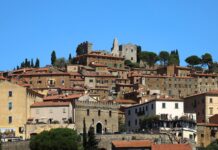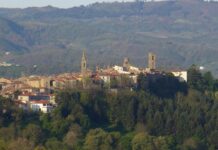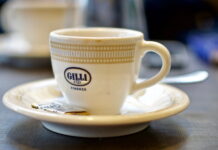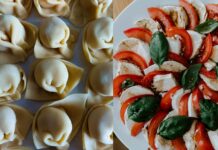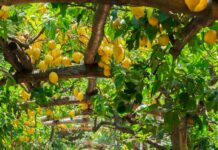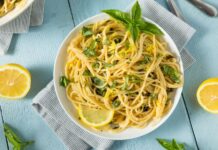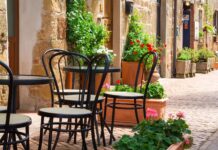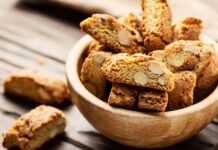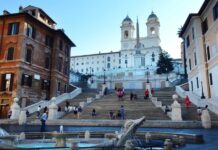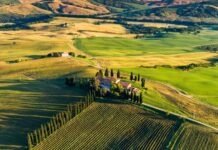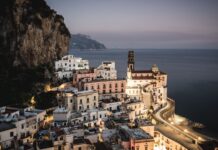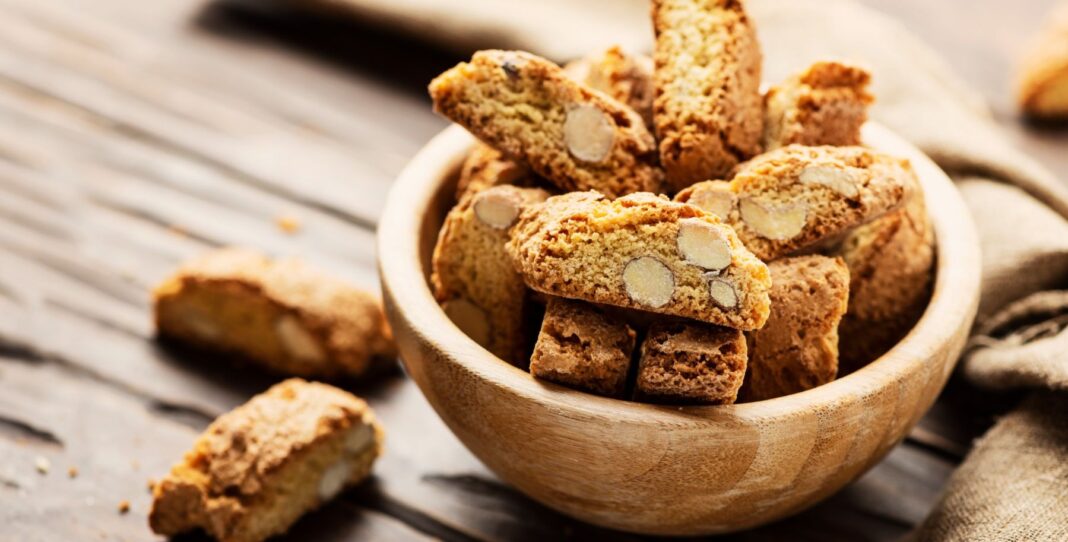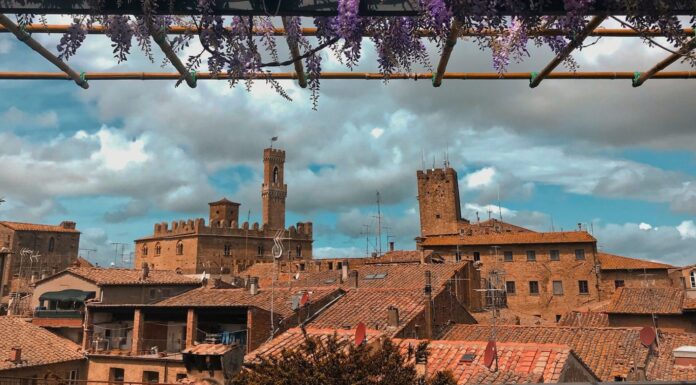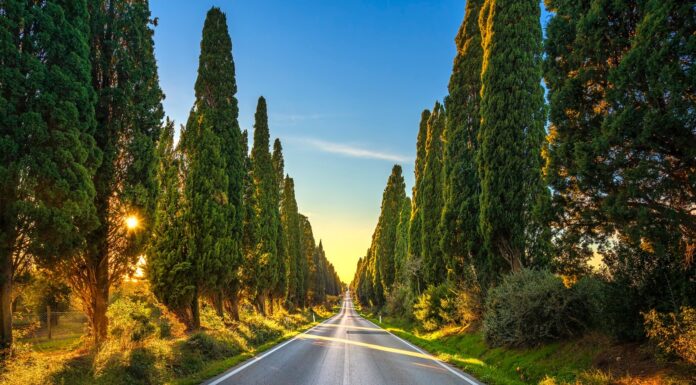Tuscan desserts are the perfect accent to your adventures through the region’s winding alleyways and countryside. Whether you’re stopping at a pastry shop as you stroll through the streets of a city, or packing some away for a hike through the countryside, Tuscan sweets will bring your senses fully into the experience of Tuscany. Still waiting to travel? They also offer great baking adventures in your own kitchen!
Traditional Tuscan desserts – and the wines that enhance them – have a wide range of qualities and origins. From cookies made for the holidays in the peasant kitchen, to cakes prepared for nobility, Tuscan sweets offer the best of both the simple “cucina povera” and the elite’s elegance! Their flavors are consistent with the region’s traditional spices and flours, creams, dried fruits, nuts, honey, and more.
Let’s take a look at 12 delicious sweets that are traditions of the Tuscan pastry culture, and 4 delectable dessert wines that can be paired with them. Whether you’re on a quest to find the best pastries in all of Tuscany, or want to attempt some Tuscan baking right at home in your kitchen, a delicious adventure of sweetness awaits you!
12 Traditional Tuscan Desserts and Sweets
1. Brigidini
The recipe for this wafer cookie from the town of Lamporecchio, Pistoia is said to originate with the nuns at the convent of Santa Brigida in the 16th century (you might notice that the cookies bear the same saint’s name). The very thin dough is seasoned with anise, and the resulting cookie is quite delightfully crumbly! They are often eaten with Vin Santo.
2. Cantuccini
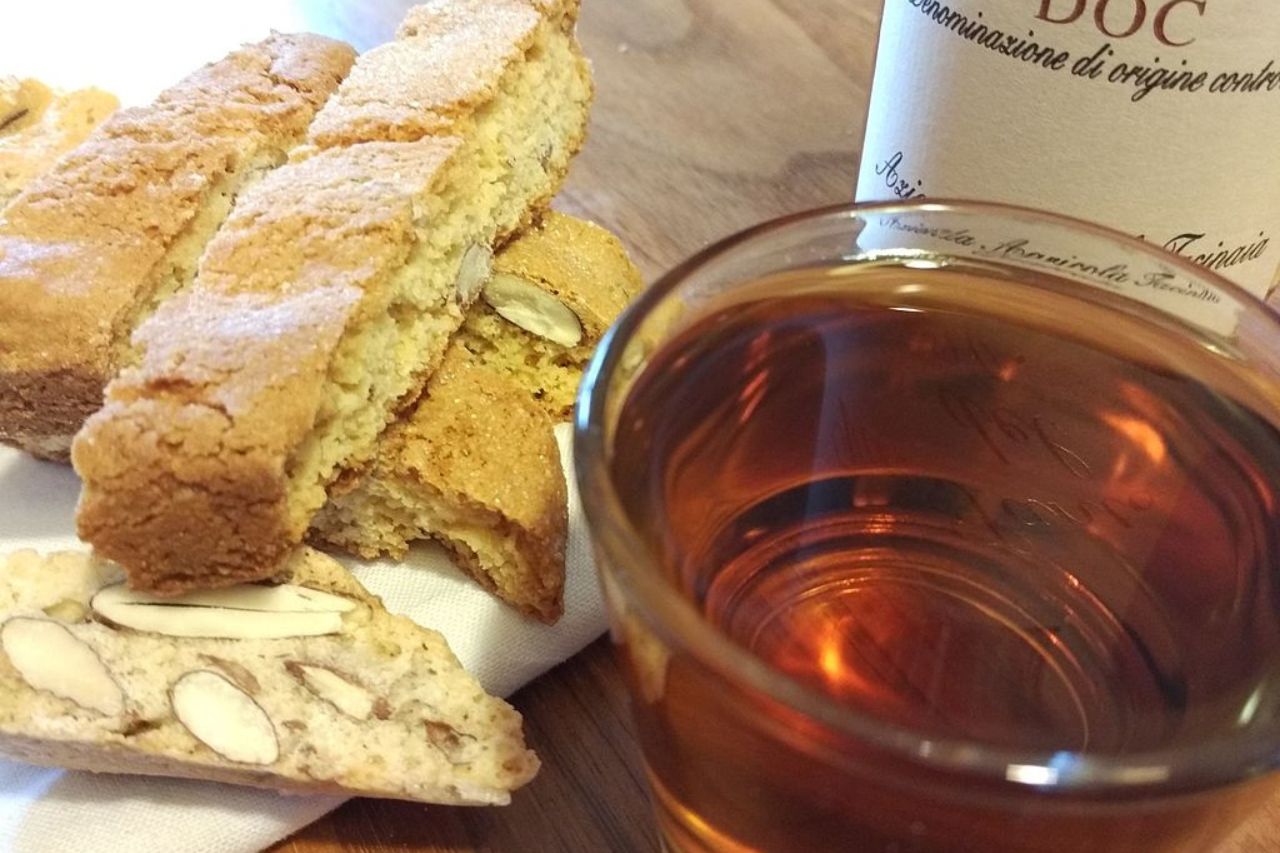
This Tuscan sweet is the original inspiration of the “biscotti” (the Italian word for cookies, biscuits) found in American cafes and supermarkets. The key flavors in this dessert are lemon zest and almonds.
The signature of cantuccini preparation is that they are baked twice, creating a unique crunchiness. First, they are baked in a larger dough form. Then they are removed from the oven and sliced into individual cookies before being baked once more. Cantuccini, unlike their Italian-American cousins, are not traditionally dunked in coffee. Instead, they are usually eaten with Vin Santo, like brigidini.
Explore more: Tuscan Food – A Wealth of Pasta Sauces, Soups, and Sweets!
3. Castagnaccio
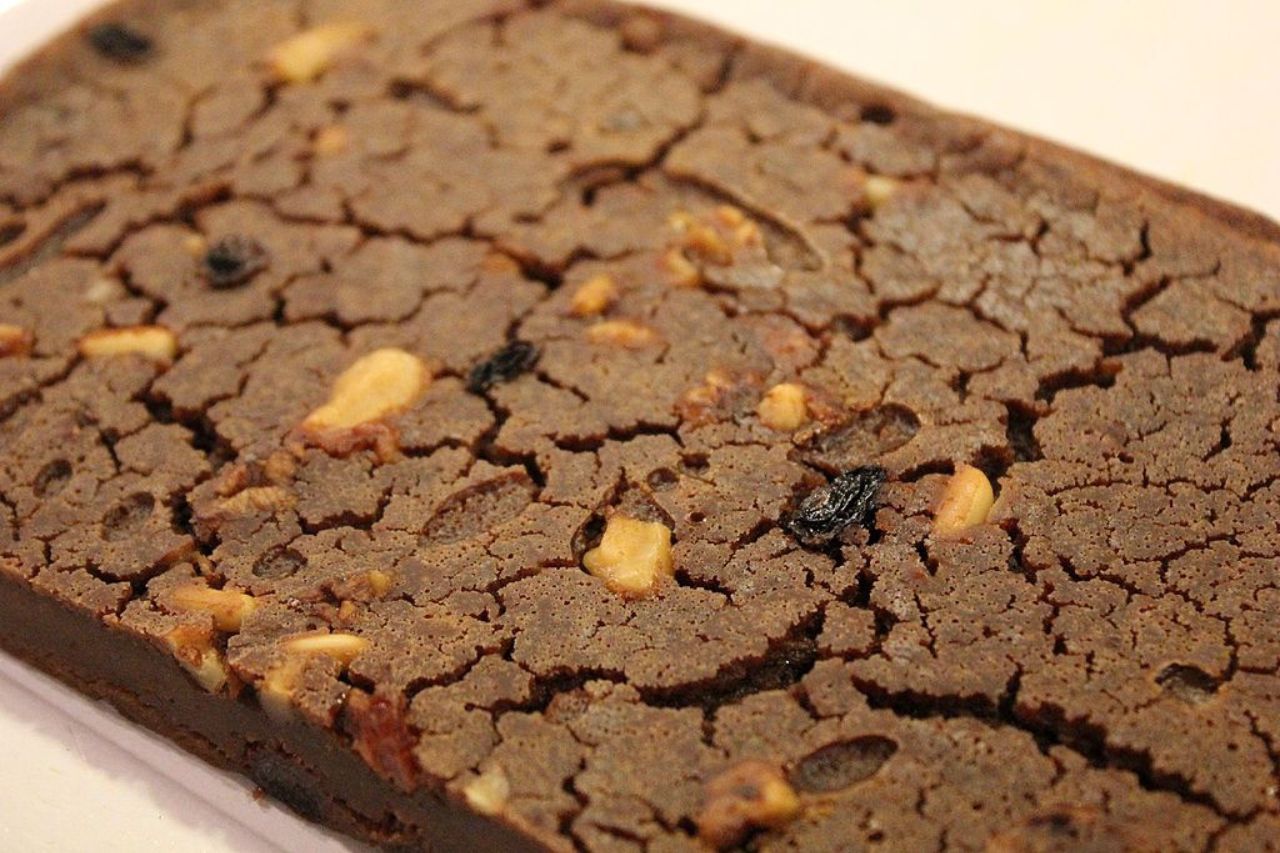
Castagnaccio is a traditional Tuscan chestnut flour cake flavored with olive oil, raisins, pine nuts, walnuts, and rosemary. There is no butter, eggs, or yeast involved! It can also be found in many regions of Northern Italy where chestnuts are bountiful. Castagnaccio was first made before the 1500s as a simple peasant cake in the tradition of “cucina povera” or simple poor kitchen. In the 1800s it became more widespread and the pine nuts and raisins were added. It pairs well, like many Tuscan desserts, with Vin Santo, but is also recommended with ricotta or honey.
4. Cavallucci
The name for this soft Christmas cookie comes from the term for “little horses.” Though the original cookie was quite simple, common modern seasonings are anise, cloves, coriander, honey, walnuts, or candied fruits. The story goes that the original cookies made in Siena were stamped with the image of a horse. They were thus named after the horseman or cavallari who drove two-wheeled horse-drawn carts through the towns and stopped at inns to rest or change horses. Others say that the cookie itself resembles a horse’s hoof. During Renaissance times, the church’s council would serve cavallucci at Christmas.
Read More: Northern vs Southern Italian Food – 14 Rich Culinary Delights
5. Cenci
This classic Italian carnevale pastry is known all over Italy by different names. The Tuscan term cenci comes from the words for rags, but in other areas, they are called Chiacchiere (chit-chat), Bugie (lies), or Frappe (fritters). Carnevale is a Catholic festival celebrated the last Tuesday before Lent begins. It is dedicated to eating the foods that won’t be consumed during Lent. But the period of Carnevale celebrations – and cenci eating – starts much earlier in late winter. This makes winter an interesting time period to visit Tuscany and join in the celebrations… and cenci! The fried pastry is crunchy, light, and bubbly, and dusted with powdered sugar.
6. Copate
The nuns of Montecelso in Siena were making this Tuscan Christmas dessert as far back as the 1400s. They are believed to have prepared them for important guests who visited the convent. Copate are a bit of a cookie sandwich, shaped like a thin disc: two thin wafers on either side, and delicious nougat in the center – made of honey, hazelnuts, and almonds.
7. Panforte
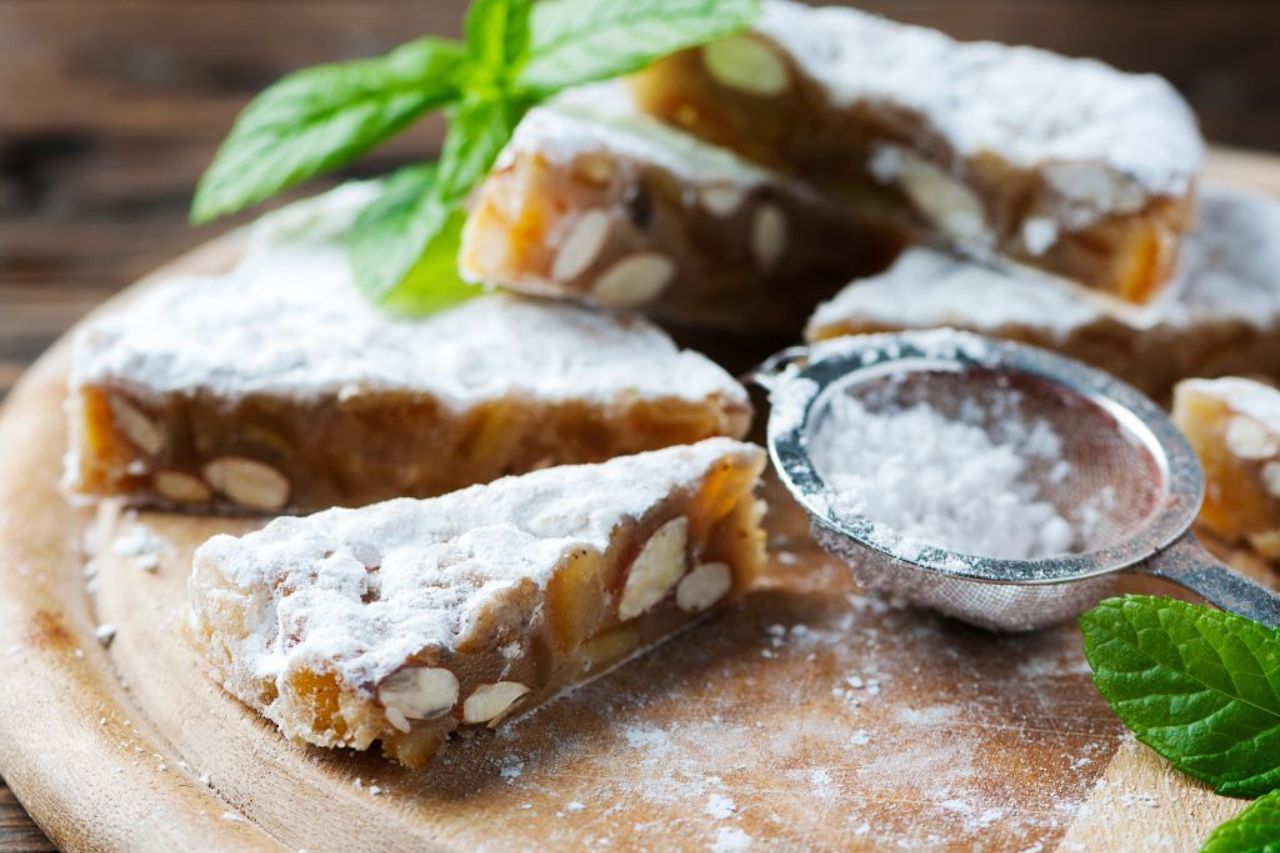
Panforte is an ancient Tuscan sweet bread from Siena, named as “strong bread” perhaps due to the strong flavors created by the preparation method. Dating back to the Middle Ages, it is a flat, unleavened bread made by dissolving honey and sugar. It is seasoned with a blend of spices, dried fruit, almonds, and powdered sugar. Traditionally, the fruits were cooked fresh into the cake, so that they fermented rather than dried. This gave the bread a rather strong taste. However, the name originally comes from the Latin Panem Fortis or “sour bread.” A special variety, Panforte Margherita, was prepared in 1879 by an important pastry chef for Queen Margherita of Savoy, using a standard 17 ingredients.
8. Ricciarelli
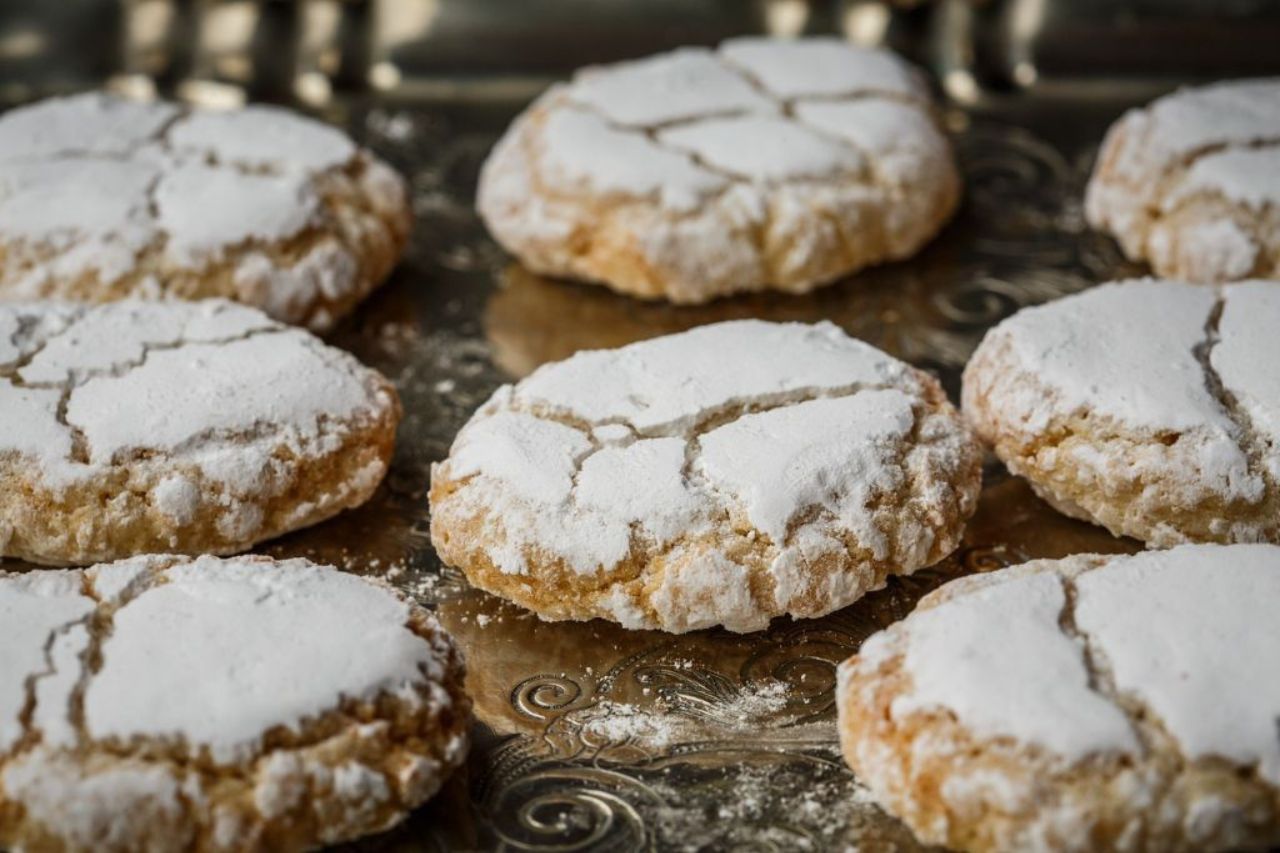
Legend has it that ricciarelli cookies were first introduced in Tuscany by a knight named Ricciardetto della Gherardesca, in his castle near Volterra. He reportedly brought them (or at least, their concept) back with him from the Crusades. Ricciarelli are a type of dense and chewy Tuscan macaroons, whose popularity traces back to Siena. Crinkled on top and dusted with powdered sugar, they are made with almond paste, egg whites, and sugar. Some say the name comes from riccio, or hedgehog, which may make reference to their shape and texture.
9. Schiaccia Briaca
This ancient Tuscan cake from Elba Island is flavored with walnuts, almonds, pine nuts, raisins, red-colored Alchermes liqueur, and the Aleatico dessert wine local to the island. The cake has very old origins, though alcohol was only introduced in the 1800s. The lack of alcohol in the original recipe supports one theory that it was brought to the island by Arab Muslims.
10. Sfratti
Sfratti are a walnut and honey pastry from Pitigliano, which was home to a thriving Jewish community who fled there after being displaced by Papal regulations in other areas. It even came to be known as Little Jerusalem. Gentiles and Jews lived there together until Mussolini’s segregation laws were imposed. The name means “stick” which was also used to refer to tenant evictions since reportedly the landlords would chase tenants out with a stick. Made with a mixture of flour bound with white wine and olive oil, sfratti reflect the Jewish origins of Pitigliano by being easy to produce following Kosher laws. Today they are often served on Rosh Hashanah.
11. Torta della Nonna
“Grandmother’s cake” is a famous Tuscan dessert that contains a thick vanilla-citrus custard filling and is topped with pine nuts and powdered sugar. Traditionally it was made with a covered top, like a pie, but contemporary versions often leave the top open to appear more like a tart. It uses the classic Italian Pastry Cream, used to fill a wide variety of desserts and sweets.
12. Zuccotto
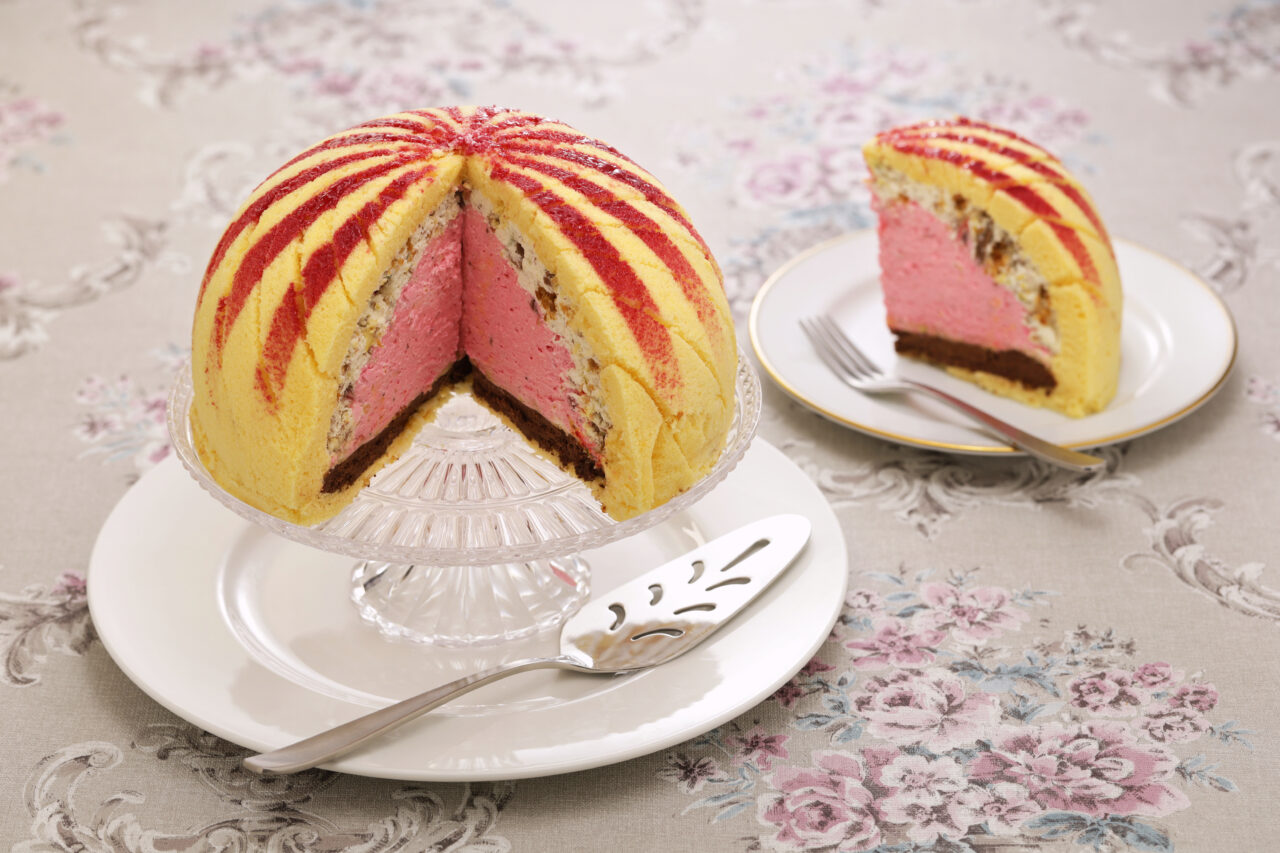
The story goes that the first Zuccotto was made at a banquet for the Medici family in Tuscany. This semi-frozen dome-shaped cake from Florence is made with Alchermes liqueur, cake, and ice cream. The name zuccotto means “little pumpkin,” but it may also refer to a cardinal’s dome-shaped skullcap called a zucchetto… or perhaps both!
Tuscan Desserts Cooking Classes
Tuscan Dessert Wines
Vin Santo
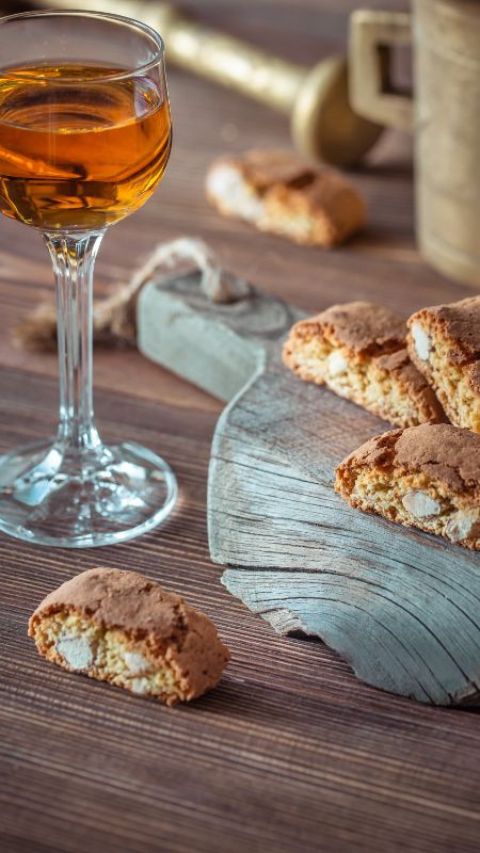
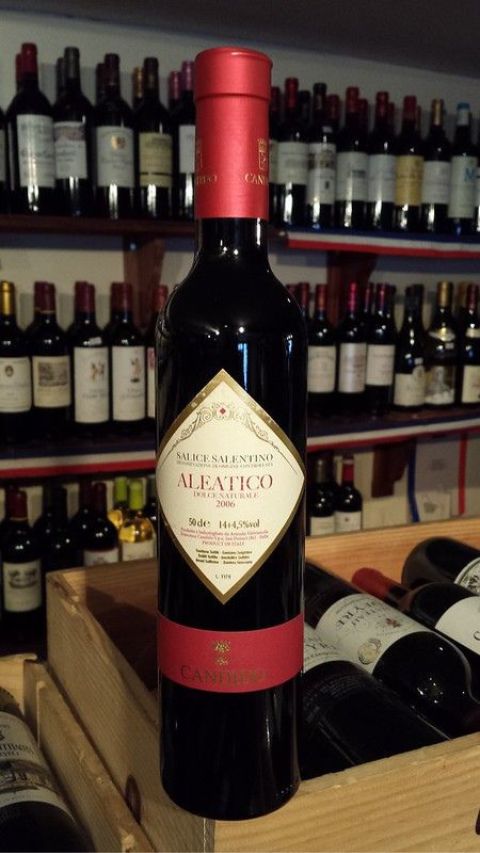
This Tuscan dessert wine, produced mainly in Chianti and Montepulciano, is typically made from dried grapes, which creates a higher concentration of sugars. Its name means “Holy Wine,” most likely referencing its use in the Catholic Mass, where sweet wine was preferred.
Read more: Best Wineries in Tuscany – Dreamy Wine Trips in 2023
Aleatico dell’Elba
This Tuscan red wine from Elba Island is also made from dried grapes, and boasts regulated production and origins. It pairs well with fruit tarts, chocolate, red fruits… and of course with Schiaccia Briaca, the pastry from Elba Island that uses Aleatico in its recipe.
Ansonica del Giglio
On Giglio Island winemaking has ancient origins, and winemakers still follow ancient traditions, including in the production of Ansonica. The flavors of this wine reflect the “nectars” of the island – a honey-like profile of the Mediterranean flowers and fruits found growing near the vineyards.
Moscadello from Montalcino
Moscadello is one of Italy’s most famous wines, and its origin is regulated by the wine industry. That means that wines labeled “Moscadello di Montalcino” must be, indeed, from Montalcino. The particular environment affects the qualities and taste of the grapes, which are harvested later in the season than other types. Moscadello is a sweet white wine and is often paired with sweets both creamy and dry. It has a golden color and its flavor is known for floral and fruity notes.


